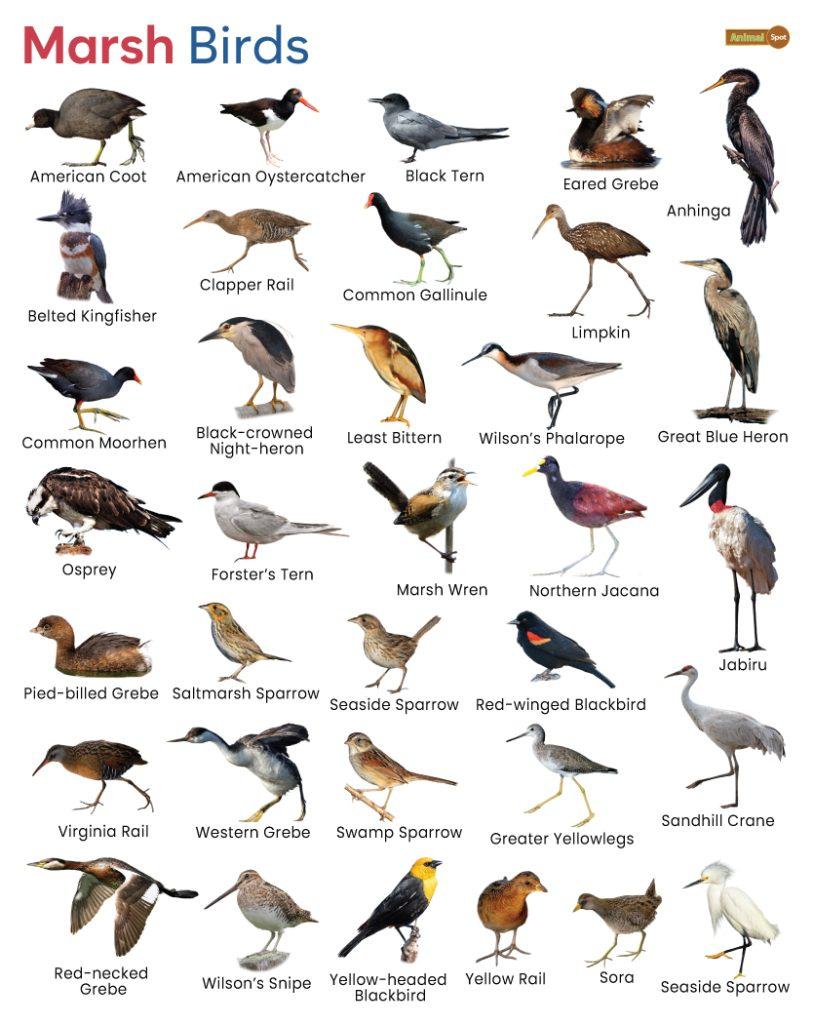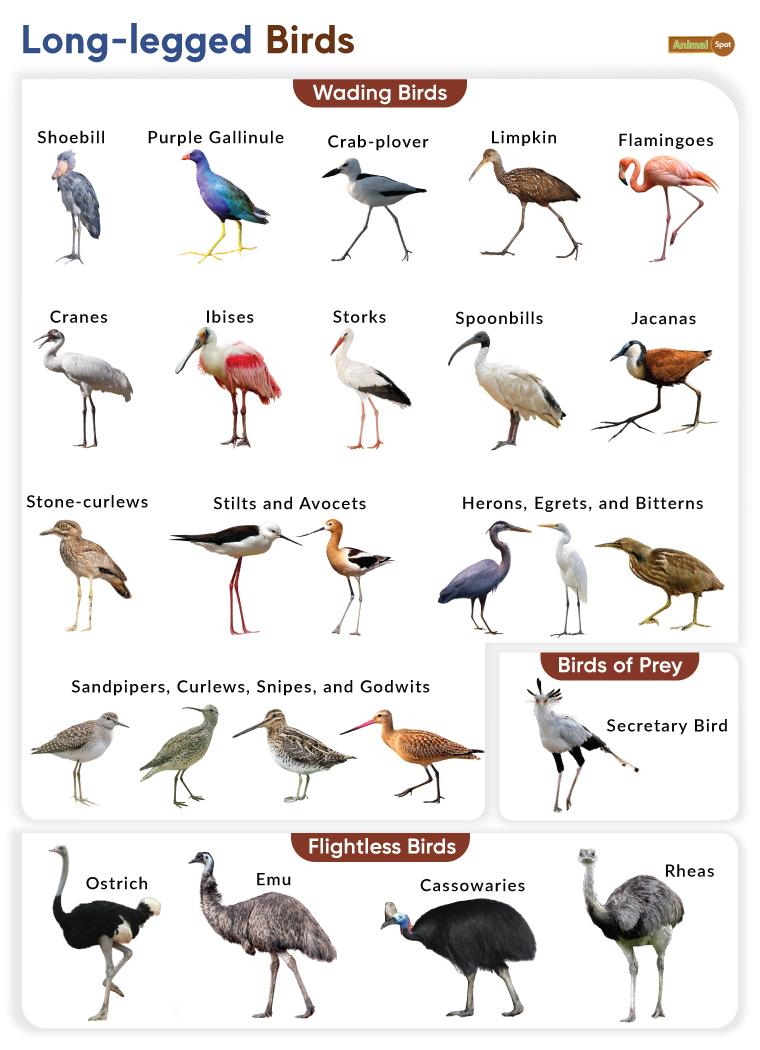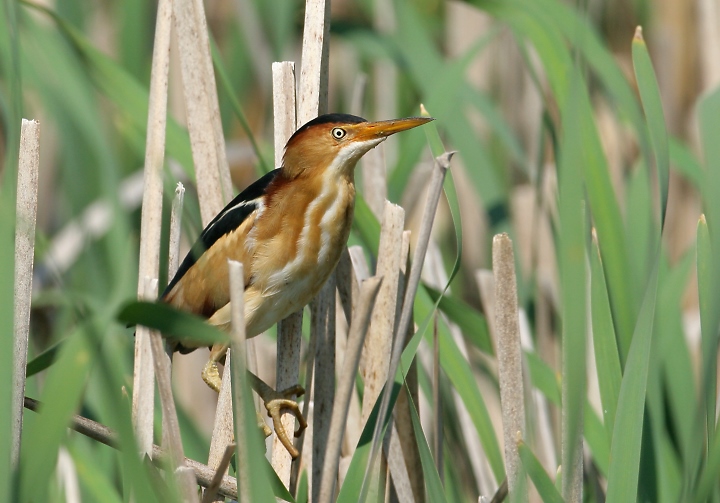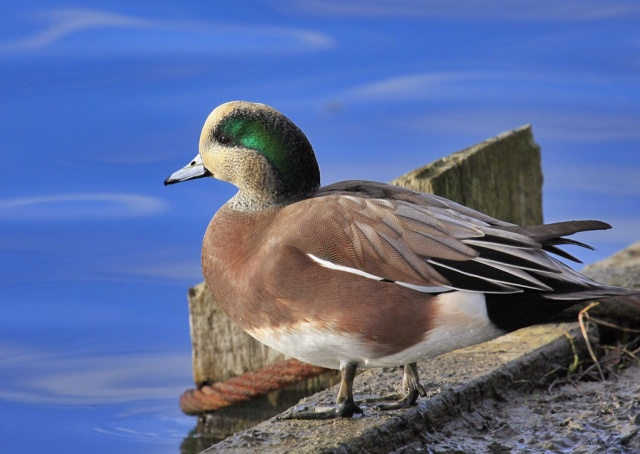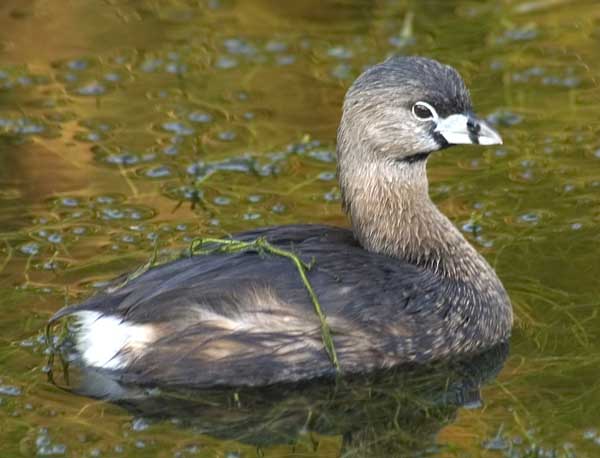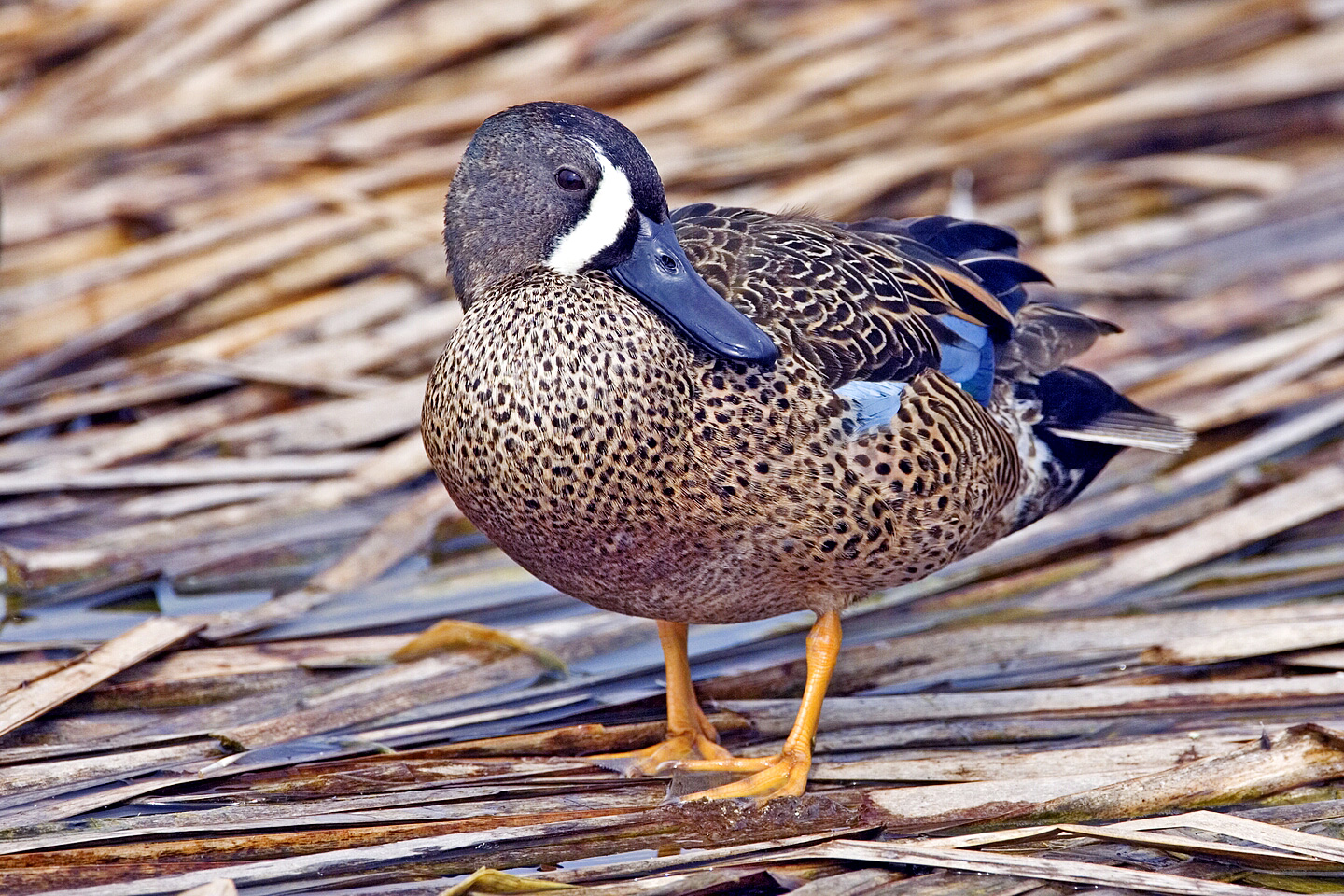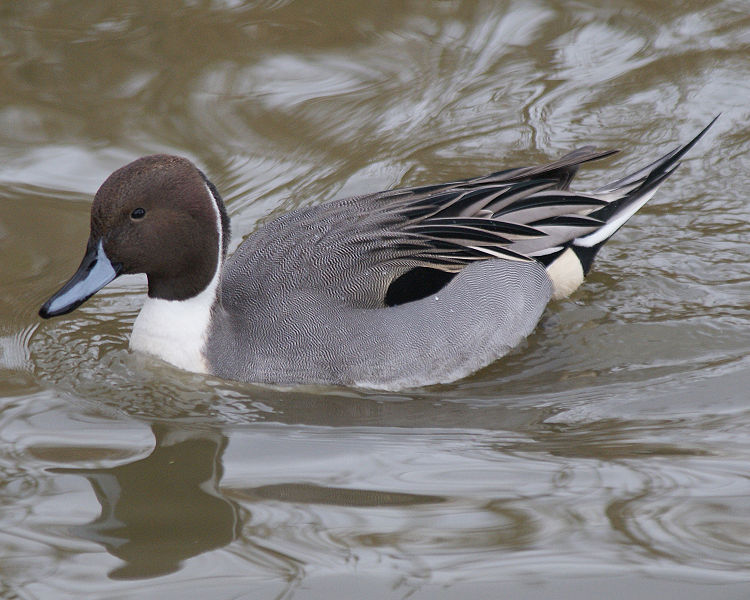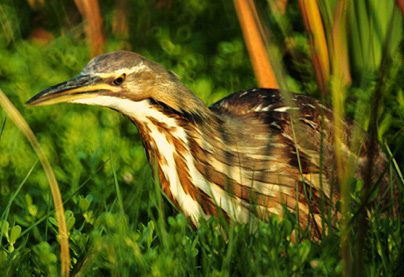| American Oystercatcher | 17-21 | Both | Along the Atlantic and Gulf coasts from Maine to Texas |
| Anhinga | 29-37 | Freshwater | Common in the southeastern U.S., especially in Florida and along the Gulf Coast |
| Belted Kingfisher | 11-14 | Both | Widespread across the U.S., often near rivers, lakes, and coasts |
| Jabiru | 45-55 | Freshwater | Freshwater wetlands and marshes in Central and South America |
| Limpkin | 19-23 | Freshwater | Freshwater wetlands in the southeastern U.S., especially Florida and Georgia, Central America, and northern parts of South America |
| Marsh Wren | 5-6 | Freshwater | Dense freshwater marshes in North America, Central America, and parts of South America |
| Northern Jacana | 11-14 | Freshwater | Tropical freshwater marshes in Central America and parts of northern South America |
| Osprey | 20-24 | Both | Worldwide, except polar regions, often near freshwater and coastal marshes |
| Purple Martin | 7-8 | Both | Wetlands and urban areas in North America |
| Sandhill Crane | 40-48 | Freshwater | Freshwater wetlands in North America, especially in states like Nebraska, Georgia, Florida, and New Mexico, as well as Central America, and parts of South America |
| Herons, Egrets, and Bitterns |
| Black-crowned Night-heron | 22-28 | Both | Wetlands in the U.S., especially from the East Coast to the West Coast |
| Great Blue Heron | 36-54 | Freshwater | Freshwater wetlands and marshes across North America, Central America, and parts of South America |
| Green Heron | 16-18 | Freshwater | Marshes and wooded wetlands in North America, Central America, and parts of South America |
| Least Bittern | 10-14 | Freshwater | Freshwater wetlands and marshes in North America, Central America, and parts of South America |
| Snowy Egret | 24-28 | Both | Across North and Central America, the Caribbean, and parts of South America |
| Rails, Gallinules, and Coots* |
| Clapper Rail | 12-16 | Saltwater | Coastal marshes along the Atlantic and Gulf coasts from New Jersey to Texas |
| Common Gallinule | 9-11 | Freshwater | Freshwater wetlands across North America, Central America, and parts of South America |
| Common Moorhen | 9-12 | Freshwater | Freshwater wetlands in Europe, Asia, Africa, and North America |
| American Coot | 12-14 | Freshwater | Marshes and ponds across North America, Central America, and parts of South America |
| Sora | 8-10 | Freshwater | Across North America, from Nova Scotia and southern Yukon in Canada to US states like California and New Mexico, extending northeast to Pennsylvania and New England |
| Virginia Rail | 8-10 | Freshwater | North America, from Nova Scotia in Canada to southern British Columbia, as well as California and North Carolina in the US and Central America |
| Yellow Rail | 7-8 | Freshwater | Dense marshes and wet prairies in North America, from Canada to the Great Lakes in the US |
| Sandpipers and Allies |
| Greater Yellowlegs | 13-15 | Both | Wetlands in North America, Central America, and parts of South America |
| Wilson’s Phalarope | 9-11 | Both | Wetland habitats in the northern U.S. and Canada |
| Wilson’s Snipe | 9-11 | Freshwater | Across wet meadows in North America, Central America, and parts of South America |
| Grebes |
| Eared Grebe | 12-16 | Both | Freshwater and saltwater marshes in North America, Europe, and Asia |
| Pied-billed Grebe | 10-13 | Both | Widespread across freshwater ponds and marshes in North and Central America |
| Red-necked Grebe | 12-17 | Both | Freshwater and coastal marshes in North America, Europe, and Asia |
| Western Grebe | 20-26 | Both | Western North America |
| Swallows |
| Violet-green Swallow | 5-6 | Both | Near forests, cliffs, and wetlands in western North America, from Alaska in the US to Montana and Texas in the east and Mexico in the south |
| Barn Swallow | 6-8 | Both | Open fields and wetlands worldwide, except polar regions |
| Northern Rough-winged Swallow | 6-8 | Both | Near rivers, lakes, and wetlands in North America |
| Cliff Swallow | 5-6 | Both | Open fields and wetlands in North and Central America |
| Terns |
| Black Tern | 9-12 | Both | Across the northern U.S., migrates through the Gulf Coast |
| Forster’s Tern | 12-14 | Saltwater | Saltwater marshes and estuaries on the coasts of North America |
| Stilts and Avocets |
| American Avocet | 14-17 | Both | Wetlands and coastal marshes in North America, including Washington, Colorado, Utah, Montana, Idaho, North and South Dakota, Nebraska, and parts of New Mexico, Oklahoma, and Texas in the US |
| Black-necked Stilt | 13-15 | Both | Coastal and inland wetlands in North and Central America, especially along the Colorado River passing through California and Oregon |
| Sparrows* |
| Saltmarsh Sparrow | 5-6 | Saltwater | Along the Atlantic coast of the U.S., from Maine to South Carolina |
| Seaside Sparrow | 5-6 | Saltwater | Along the Atlantic and Gulf coasts of the U.S., from Hampshire to Texas |
| Swamp Sparrow | 5-6 | Freshwater | Across freshwater marshes and bogs in North America |
| Blackbirds |
| Red-winged Blackbird | 7-9 | Both | Common across North America in a variety of wetland habitats, including marshes |
| Yellow-headed Blackbird | 9-10 | Both | Wetlands and marshes in the western U.S., especially Arizona and California, and Canada |
| Tricolored Blackbird | 9-10 | Both | Marshes and wetlands in western North America, especially in California |
| Brewer’s Blackbird | 7-8 | Both | Wetlands, agricultural areas, and open woodlands in North America |
| Swifts |
| White-throated Swift | 7-8 | Both | Near cliffs and open spaces, including wetlands in North and Central America, including California, Texas, Arizona, and New Mexico in the US, as well as Mexico |
| Black Swift | 8-9 | Both | Mountainous and wetland areas throughout the western Americas, from Canada to Brazil |
| Vaux’s Swift | 7-8 | Both | Forests and wetlands in the Americas from southern Alaska to Venezuela, encompassing California, Mexico, Panama, and the Yucatán Peninsula |

